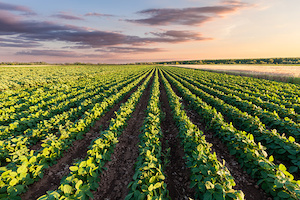University of Kentucky researchers have recently come together to determine the best way to seed cover crops into double-crop soybeans. In addition, they are looking into which cover crop can provide the most nitrogen benefit to corn planted in the same field the following spring. Ultimately, the goal is to determine how these cover crops affect the nitrogen dynamics of corn, according to soil scientist Edwin Ritchey, who is leading the group.
This study is looking into whether making an aerial seeding application of cover crops before soybean leaf drop aids in the timely cover crop establishment without negatively impacting the harvest of soybeans.
“Soybeans, especially double-crop soybeans, are often harvested so late that it’s hard to get a cover crop established if a producer waits until after harvest,” said Ritchey. “Another issue is that soybeans leave very little residue in the field, making these fields more prone to erosion. By seeding the cover crop before leaf drop, we hope to reduce erosion and provide a nutrient benefit to the soil for the subsequent crop.”
The researchers note that seeding timing is critical for establishment. For instance, farmers cannot seed a cover crop after a soybean leaf drop, or it will not have the soil contact it needs to grow. Seeding later than necessary may result in little or no fall growth. Seeding too early results in excessive cover crop growth.
A U.S. Department of Agriculture Conservation Innovation Grant is funding the project, and more information can be found by contacting Edwin Ritchey at 859-562-1331.
